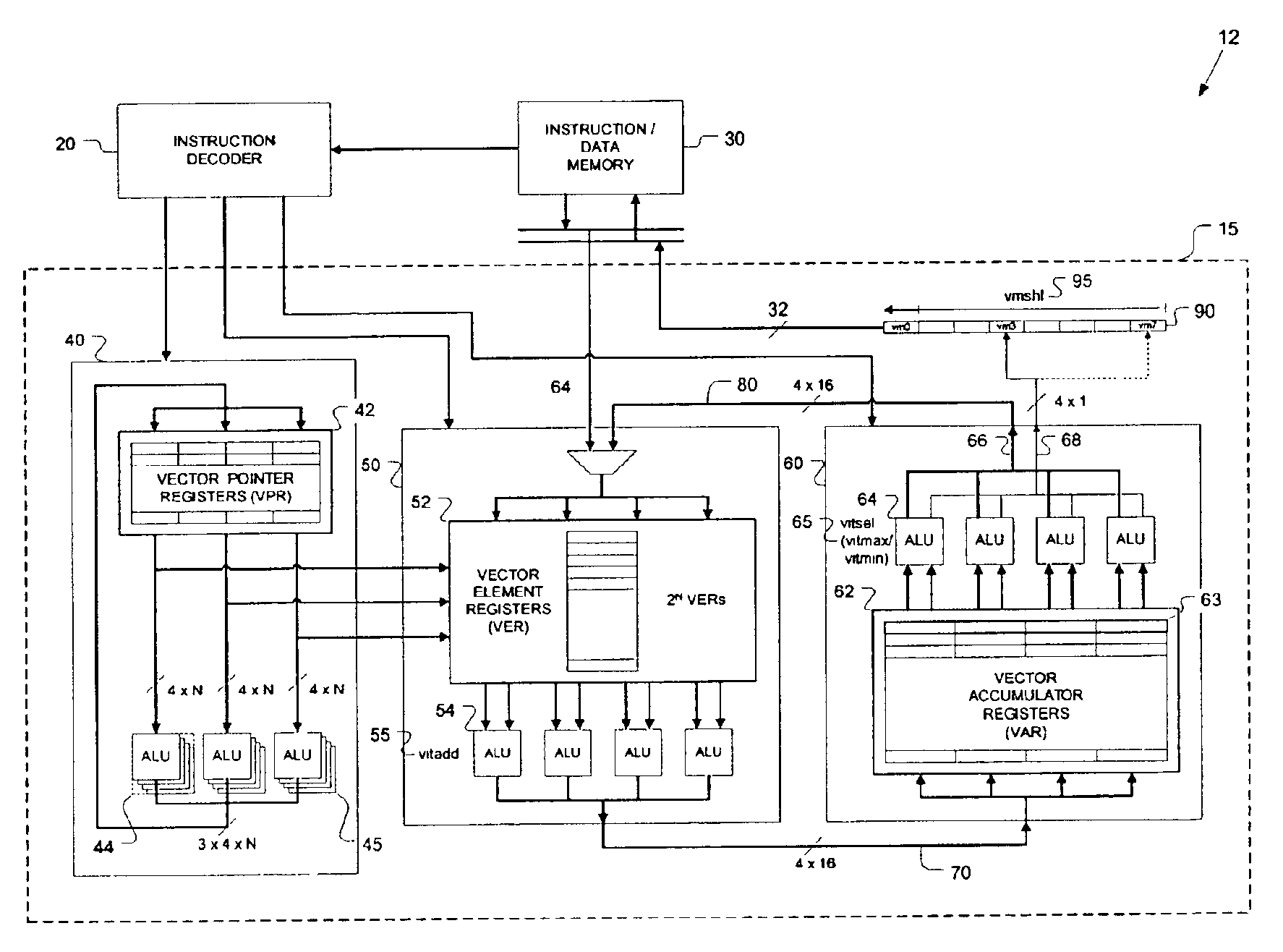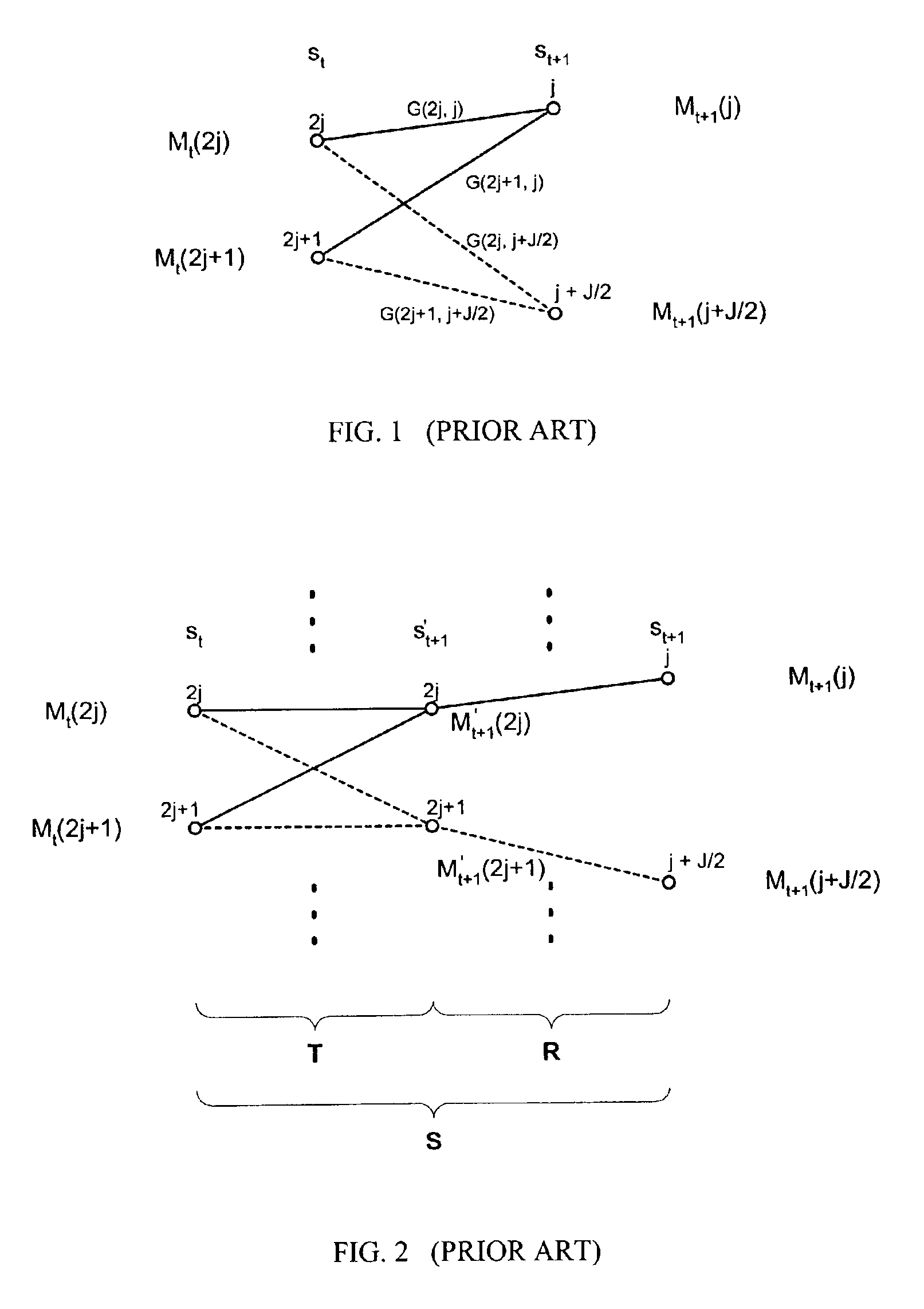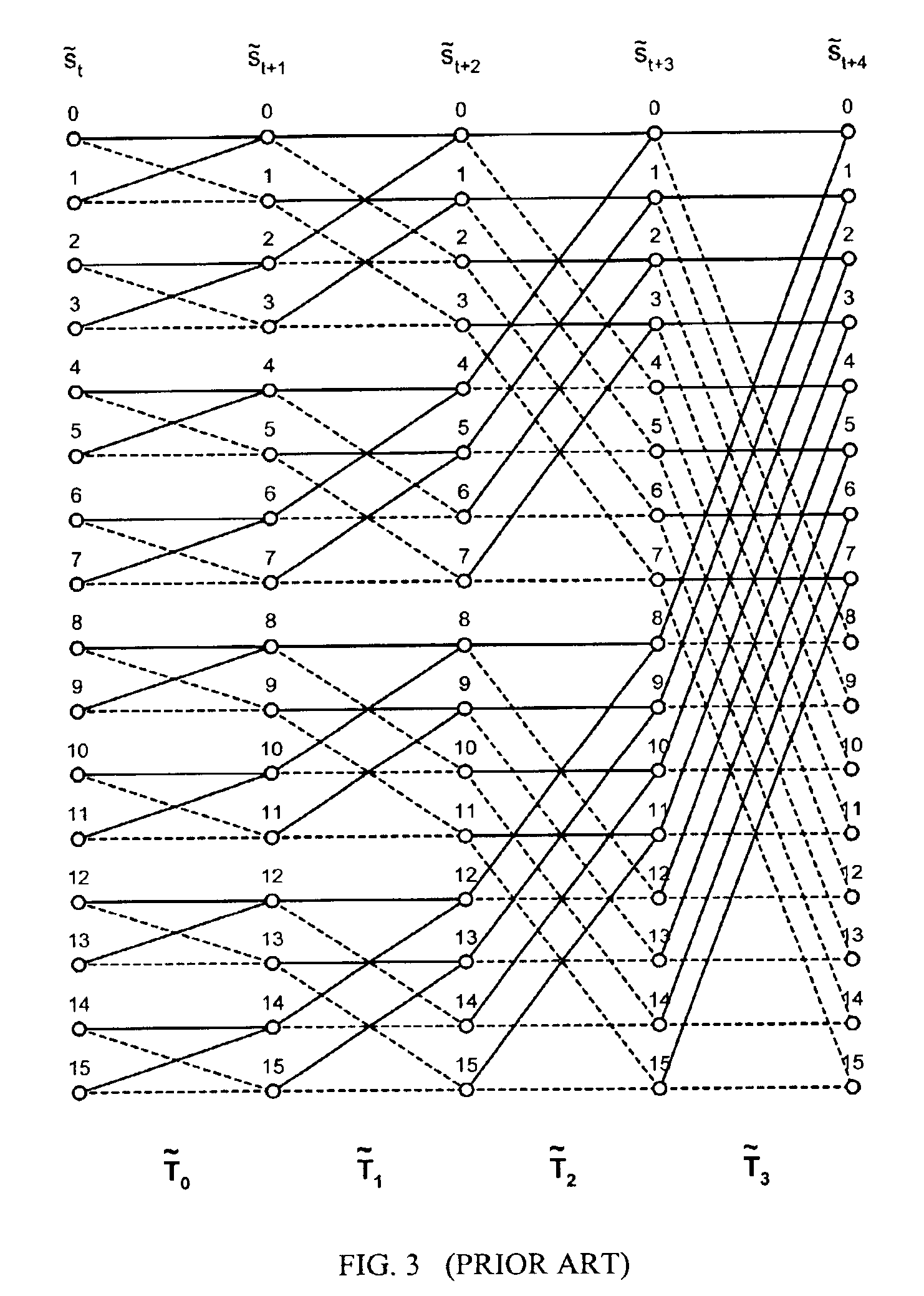Viterbi decoding for SIMD vector processors with indirect vector element access
a vector processor and indirect vector technology, applied in the field of digital signal processing and decoding error correcting codes, can solve the problems of inefficient frequent memory transfer is expensive in power consumption, and repeatedly moving metric data from/to memory incurs a significant power consumption overhead, etc., to achieve efficient rotation metric indexing or addressing, and suppress carry propagation
- Summary
- Abstract
- Description
- Claims
- Application Information
AI Technical Summary
Benefits of technology
Problems solved by technology
Method used
Image
Examples
Embodiment Construction
[0055]In FIG. 5 a schematic block diagram of a configuration for Viterbi decoding according to the present invention is shown. FIG. 5 indicates the relevant parts of a digital signal processing device 12, also referred to as DSP processor 12, for Viterbi decoding. The DSP processor 12 comprises an instruction decoder 20, an instruction / data memory 30 such as SRAM or DRAM, and a vector processing unit 15. The vector processing unit 15 comprises a vector pointer unit 40 for indirect vector access, a first vector unit 50 that is also referred to as vector element unit 50, and a second vector unit 60 that is also referred to as vector accumulator unit 60. Further, the vector processing unit 15 comprises a feedback connection 80 for updating Viterbi metrics, digital circuitry 68 and a shift register 90 for recording Viterbi traceback information and uses instructions 55, 65, and 95 optimized for Viterbi decoding. The instructions are labeled as vitadd 55, vitsel (vitmax / vitmin) 65, and v...
PUM
 Login to View More
Login to View More Abstract
Description
Claims
Application Information
 Login to View More
Login to View More - R&D
- Intellectual Property
- Life Sciences
- Materials
- Tech Scout
- Unparalleled Data Quality
- Higher Quality Content
- 60% Fewer Hallucinations
Browse by: Latest US Patents, China's latest patents, Technical Efficacy Thesaurus, Application Domain, Technology Topic, Popular Technical Reports.
© 2025 PatSnap. All rights reserved.Legal|Privacy policy|Modern Slavery Act Transparency Statement|Sitemap|About US| Contact US: help@patsnap.com



